Australian filmmaker Mark Savage made his first feature (MARAUDERS) at the age of 24 and has never looked back since, so with the release of his latest film STRESSED TO KILL our very own Stuart Willis caught up with Mark to discuss his career, the new movie and future plans in our SGM Spotlight exclusive interview.
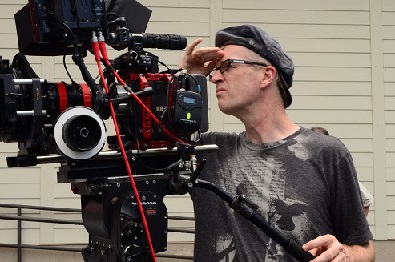
Stuart: Hi Mark, first of all I'd like to congratulate you for STRESSED TO KILL, which is great, and thank you for taking the time to answer a few questions.
If I can start back at the beginning, I'd like to hear a little about your 1986 film MARAUDERS. Like, how it came to be, what it cost to make, the ensuing controversy it attracted and what making it taught you?
Mark: Iíd made over 100 Super-8 films in the preceding 7-8 years (from age 15) and answered the desire to make a feature. I worked as a director/cameraman for a production company, so took advantage of the availability of equipment to shoot and cut the movie. My boss at the time generously agreed to let us use his cameras and editing facilities after I pointed out to him that they were "wasted resources" on the weekends.
MARAUDERS was shot on 1" videotape using a portable machine called a VPR-5 (an Ampex/Nagra hybrid). The crew was comprised of myself, Paul Harrington (a workmate at the time who went on to produce ĎThe Secretí), Richard Wolstencroft (a schoolboy at the time who now makes movies), and my brother Colin, who doubled as lead villain and co-producer.
Hard to estimate budget as all equipment and editing was donated by my boss. Paul, Richard, Colin and myself shelled out about $5-10K in cash to pay for tape stock. Iíd say itís a $50K movies. It [MARAUDERS] was one of the first features shot on video in the world, I believe (í86). Others followed in Australia such as HOUSEBOAT HORROR and BLOOD LUST. There were American shot-on-vid features, too, such as THE RIPPER.
Aussie distributors found the movie too excessive. One distributor, Seven-Keys, finally decided to release the movie, but went bust a month after the announcement. It was screened at several festivals and picked up for worldwide sale by a company called MC Stuart and Associates. Their first sale was to "Black Africa". To this day, I have no idea what this means. There is no Black Africa,
Stuart: The film is renowned for its excessive violence and you're not shy of admitting your love of extreme cinema. What do you think the appeal is - for you personally, and in general?
Mark: Films that are excessive perhaps personify an anti-authoritarian point of view that young people embrace at a certain age. Most shake that view off once they get jobs and have children. Some donít. For me, extreme films are a metaphor for a certain freedom of the spirit and psyche.
From a young age, I felt a sympathy for outsider characters. I saw the worldís hypocrisy and bullshit at a very young age, and it shaped my interests and interest in art (films, paintings, music, literature) because art, like nothing else, seemed honest ĖĖ at least some art.
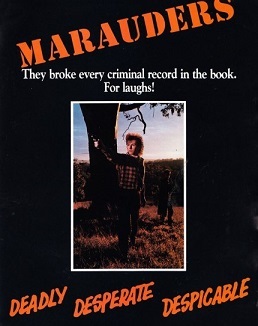
Partly, MARAUDERS was a scream of anger at Australiaís (at the time) draconian censorship regime. Films like The Texas Chainsaw Massacre, Last House on the Left, and Forced Entry were all banned. I would constantly read about films I wasnít allowed to see. A board of old farts were deciding what I could and couldnít see. I couldnít accept that. So MARAUDERS represented a conscious effort to produce something, in Australia that would be unacceptable to most people. It was influenced by films like THE HOUSE BY THE LAKE, I SPIT ON YOUR GRAVE, and Walter Hill action-comedies (48 HOURS). I was also conscious of XXX-rated films like LUST INFERNO, FEMMES DE SADE, and FORCED ENTRY that I had never seen. My fantasy of them informed the influence.
Stuart: There is a lengthy gap in your IMDb resume following MARAUDERS, your next directorial effort being 2000's SENSITIVE NEW AGE KILLER. What was happening in the meantime?
Mark: Immediately after MARAUDERS I was asked to direct a TV movie called "No Time For Games" by a company called Catholic Communications. Theyíd seen bits of MARAUDERS. That was a great experience. Some of the same crew worked on that one. It screened on HSV7 in Melbourne, a major network. I then did a docudrama called NO WAY BACK, which was about Laotian refugees.
With Richard Wolstencroft I made an almost-feature length zombie film called UNDEAD before the other Australian UNDEAD came out; it was a very grim film about a young manís obsession with a female zombie. A horror-themed TV pilot called THE ZOMBIE SQUAD followed (I worked with Paul Harrington from MARAUDERS on that), and further BEYOND THE PALE Super-8 movies (BYP was an extreme series of films I made over a decade) were made also. These will most probably never be released.
Beyond that, I shot and directed commercials and tried hard to get other features up.
Before SENSITIVE NEW AGE KILLER went ahead in Ď99, a Japanese company became interested in me doing THE MASTURBATING GUNMAN. For its US release, the title was changed to MASKED AVENGER VERSUS ULTRA-VILLAIN IN THE LAND OF THE NAKED BIKINI, a truly ludicrous move on the part of EI Entertainment. There first choice was EMPTY PISTOL, LOADED GUN.
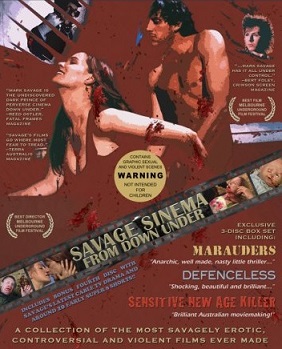
Stuart: Many were introduced to your works through Subversive Cinema's brilliant DVD boxset Savage Sinema From Down Under. This not only included MARAUDERS and SENSITIVE NEW AGE KILLER, but the troublesome short STAINED and gory epic DEFENCELESS: A BLOOD SYMPHONY, along with earlier shorts. Between them, these titles showcased an array of styles: comedy, erotica, horror, arthouse, drama ... How important is it for you to explore various styles within your work?
Mark: Very, very important, because different subjects require a different style of storytelling. Without being conscious of it, my filmmaking style/interest is really in what is now being called art house horror, or art house genre. Iíve never been too interested, as a filmmaker, in straight exploitation films like the Roger Corman style. Iíve always been more interested in films with a greater psychological element and an almost fetishistic attention to certain subject matter. Itís probably why I gravitated so quickly, at a young age, to films like THE TIN DRUM, BABY BLOOD, THE HOUSE BY THE LAKE, DEATHDREAM, and FASCINATION.
Stuart: DEFENCELESS is probably the film most SGM readers will know you for. It's a harrowing tale of corruption, rape, abuse and revenge. Could you speak a little about what inspired such content, and where the idea to present all the action sans dialogue came from?
Mark: Before DEFENCELESS, actress/co-producer Susanne Hausschmid and I made two erotic thrillers together, FISHNET and TRAIL OF PASSION. The former was a pretty standard erotic thriller with an agreed upon amount of sex scenes, but the latter (TRAIL) was an opportunity to try something a little different within genre boundaries. It energised us to make something truly personal and original that would not only be a pure expression of our creative closeness, but would be experimental in tone. Our idea was to make a violent and beautiful film without dialogue based on a simple premise ĖĖ well, based on Japanese news story, actually, that we embellished the hell out of.
Stuart: It doesn't look like it was the most comfortable of shoots?
Mark: It was a hellish shoot, much of it in a very cold Winter. Susanne endured terrible discomfort and had to be almost hospitalised at one point as she was contracting pneumonia. In the scenes where you see her lying on the beach, she was, quite literally, freezing to death. During the scene where bald actor George Gladstone is being hacked up in a little house on a prairie, Susanne exploded at me and told me she was done with the film. We made up later. I fully understood her anger. The shooting was unrelenting, too, because most of it was shot only when the sun was in a perfect position or at "magic hour".
Ultimately, we were proud of the movie, and it won several awards at a Melbourne genre festival. Susanne, who was a wonderful creative partner, now lives back in Germany.
Stuart: What doors, if any, did the boxset open up for you? Was the heightened awareness of your work palpable to you as a result?
Mark: I got a call from the William Morris Agency and had an agent for a little while. But he was too young to rep me. I wasnít known enough to have someone so young and inexperienced handling me.
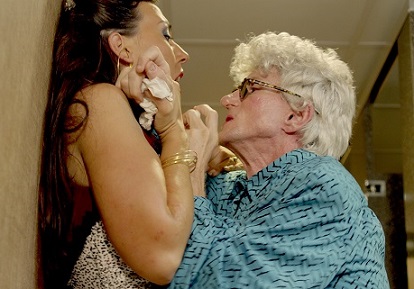
I got invited to some festivals, and made some good friends as a result of the box set.
Reviews were interesting. The box set was mostly favourably reviewed.
Stuart: What can you tell us about KINDER PLAY and FERTISLE, two interesting films that came later (2013 and 2015 respectively). They've passed completely beneath my radar, I'm sorry to say.
Mark: KINDERPLAY had a difficult history as editing took a while. The shoot was a tough one, and one of the actresses was unable to complete her final scenes. The film was shot in Australia in mostly hard-to-get-to locations over just a 5-day period which involved over a thousand miles of driving. The stars were three sisters and my brother Colin. There is minimal dialogue, and the overall tone has parallels with films like Phillip Grandrieuxís UN LAC and LA VIE NOUVELLE. I experimented with colour, unconventional cutting, and repetition of imagery. Ultimately, there was a Korean sale. I am considering an offer to put it out soon on BluRay with FERTISLE.
FERTISLE was shot on a New Zealand island just after Iíd made a three year long documentary on a man suffering from bipolar disorder called DIARY OF A MONGREL DOG. I cast this man, John Arden, in FERTISLE, and had him play himself pretty much stranded on an island with a woman who didnít want him there. The film has supernatural/horror elements, and darker themes such as rape and suicide are explored. Making it was a difficult experience as conditions were harsh.
Stuart: And ... what's this about you working on "Big Brother: USA"?!
Mark: Yes, I worked on three season of US Big Brother as a camera operator. I spent three months each season being a professional voyeur. It was an interesting experience.
Stuart: Now, in 2016, we have STRESSED TO KILL. What are the main differences in making and marketing a film, 30 years after you first started out in the business?
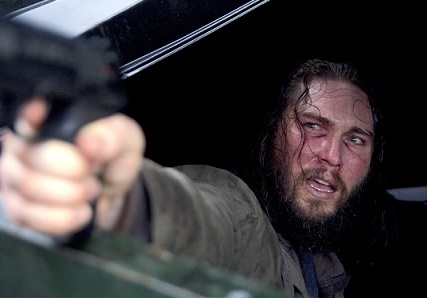
Mark: Things have certainly changed, but Iím still very committed to independent filmmaking. Now, the indie film is threatened with a type of financial extinction. Studio dominance is pushing indie films to the margins of marketing, so itís becoming increasingly more difficult to get your film seen. Streaming offers some hope, but the jury is still out on how lucrative that is.
The old system of having an international sales agent sell your movie is changing, and sales agents are still a (mostly) dishonest bunch of people. Iím on a non-stop hunt for honest ones who donít expense you into the poorhouse.
Budgets need to be lower now because revenue is more fragmented. The $3 million dollar 80ís action film or thriller is now a $750K film. Unfortunately, although revenue is lower, costs have not decreased a great deal.
Stuart: For STRESSED TO KILL, you've relocated to America. Is this a career move, or is there a conceptual reason to have the plot of this film based in Los Angeles?
Mark: STRESSED actually takes place in Tampa, Florida, where the weather is humid, the look sweaty and harsh. We shot the entire film in Florida, but did some pick-ups in Melbourne, where I also edited the movie.
Director of Photography David Richardson shot SENSITIVE NEW AGE KILLER and several other movies for me, so, although the environment was new, I was still surrounded by friends and colleagues.
Films with Americans do sell better in America, of course. Genre films from other countries, with some exceptions, do get marginalised, unfortunately. As it is very difficult to raise money, I am very focused on getting a return for my dear investors. I owe them that. That means reducing risks and focusing on aspects of a filmís production that may enhance its commercial appeal. Still, that doesnít include altering endings or taking the sting out of the material. The lower there budget, the more control you ultimately have. In the end, I just want to keep making movies ítil the day I die.
Stuart: The film plays on contemporary bugbears and the passive-aggressive manner in which many of us meekly "deal" with them. We're irritated by everything in this age of convenience, and yet we don't really know how to complain. You and Tom Parnell must've had a lot of fun fashioning a screenplay around such material?
Mark: These are frustrations we both related to ĖĖ we all relate to on some level, I dare say. The trick with STRESSED was to not make it too mean-spirited. Tom Parnell and I wanted our "hero" to be sympathetic, even when heís killing annoying people. I think Bill embodies the "everyman" very well. He doesnít look privileged or entitled. Heís us. We decided to have him kill his enemies with a blow dart because death by dart is silent, thus not attracting attention, and death by dart isnít too brutal. If he was too brutal, heíd lose the audienceís sympathy.
Stuart: I love the whole 70s vibe to the film - the deft blend of humour and dark drama, the fact that it's as much a character study as it is a thriller, the array of interesting characters, the script's unpredictable direction. Which films did you use as templates when considering the tone and style of the film?
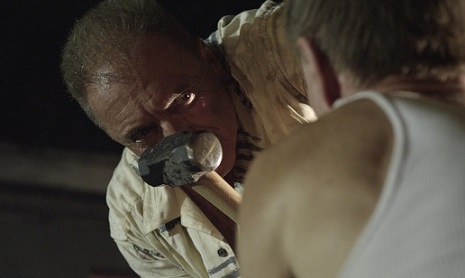
Mark: Iím glad you see it as a character-focused film because it is. Itís about behaviour. And the humour emerged fairly naturally when we were writing it.
I canít recall any films we used as a template. We were aware of GOD BLESS AMERICA because it came out while we were writing STRESSED, but GBA only made us more determined to not use a method of killing that would attract the attention of police and the public.
If any film came to mind at all leading up to STRESSED it was probably the French film THE AX by Costa Gavras. I loved the tone of that. I never showed it to Tom, though, as he didnít own a machine to play it on.
Tone is extremely important in any movie, so the choice of music has a big impact. I worked with a great Swedish composer, Glen Gabriel, who understood what I was going for, and he delivered something very special, I thought. He came recommended by our editor, James Cole, who I can also credit with being instrumental in establishing the right tone for the movie. It is a thriller, but there a black comedy edge to it.
Stuart: We must mention Bill Oberst Jr. He gives a riveting performance.
Mark: Bill is a filmmakerís dream. We discovered early on that we share a world view. We met when I was casting CIRCUS OF DREAD, a film that hasnít happened yet. We became good friends, and have a love for films like FREAKS and any art that is centred on outsider characters, misfits. For Bill, this was a straighter role, a little different for him, but he understood the character completely, and after initial conversations, there wasnít a lot more to talk about.
Stuart: And to work with Armand Assante must've been a privilege too? How was it directing him?
Mark: It was a rare privilege. Armand just couldnít do enough to give me what I wanted. He was relentless in his pursuit of inhabiting the skin of his character and took him beyond what I had hoped for.
He also likes to provide you with variations on lines after heís delivered the script as written. This became a godsend in editing.
You can write a good script, but if you donít cast it right, that good script is wasted. More than anything these days, I understand the fine line you walk between casting right and casting wrong. The actors are your storytellers, your audienceís connection with the material.
Stuart: One review I've read online has made mention of the fact that the bulk of the victims in STRESSED TO KILL are obese and/or black. While this may be true, there doesn't at any point appear to be any political motivation or message behind this - it sounds to me like they're merely stirring shit. Would you care to address their comments?
Mark: Definitely some shit-stirring in that criticism. We have a variety of victims. Three are white males. One is a black female. Two others are white females. The black female is overweight. I see no targeting of any ethnic group in the film. Bill targets different types of people who annoy him. The criticism we got from an LA Times reviewer was that there is some kind of "white manís privilege" going on in this film. Not at all. donít understand there bee that got into the reviewerís bonnet, but his take on the film was ignorant. Nothing I can do about that.
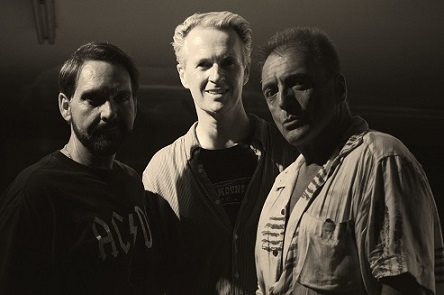
Stuart: The violence is toned down here in comparison to MARAUDERS and DEFENCELESS. Was this your decision?
Mark: Yes, it was my decision, and Tomís decision. As we wanted the film to be character-focused and reasonably realistic, we felt that extreme violence would obliterate the character work and, as I mentioned earlier, draw the attention of the public and police to his murders.
To get the right tone, we avoided extreme violence. It wasnít appropriate for this subject.
There is a body exploding and a limb flying out of a waste bin, but that is part of Billís dream.
Stuart: What are your plans for the film commercially? If I may say so, it's your strongest film to date and it deserves a wide audience.
Mark: Thank you. The film has just done some theatrical dates in the US (LA and Tampa). It will then be available to stream and download before it becomes available on DVD/BluRay. International distribution will follow.
Stuart: Can you tell us a little about another film you're currently working on, the enigmatically entitled POND SCUM?
Mark: POND SCUM is a very extreme shocker about a broken woman who takes revenge on a rapist. Unfortunately, her desire to avenge the guy creates even more problems for her. The film was shot over a five year period and is currently being mixed. I expect to have censorship problems with it in some territories as it is a potent mix of sex and violence, and there is a prevailing tone that censorship regimes often find problematic.
I have had US interest in a release, so Iím pondering the terms of the contract now. It is a very personal film that has been somewhat influenced by Japanese films like ASSAULT JACK THE RIPPER, WIFE TO BE SACRIFICED, and RAPE 13TH HOUR.
It features a brave performance by Renae Boult, a chilling turn by Ward Boult, and Tom Parnell turns up as a very sick individual.
Stuart: Finally, are there any films you've seen of late that you can recommend to our readers?
Mark: Yes: BASKIN (Turkey), LESSON OF EVIL (Japan), GREEN ROOM (U.S.), EVOLUTION (France), HEADLESS (U.S.), TAG (Japan), STARRY EYES (U.S.), BLOODSHOCK (U.S.).
Stuart: Cheers Mark, all the best with the incredible STRESSED TO KILL. Thanks again, Stu.
Mark: Youíre very welcome, Stu. Thanks so much for your interest.
Special thanks to Mark Savage. STRESSED TO KILL is available to rent or buy from Amazon in the USA